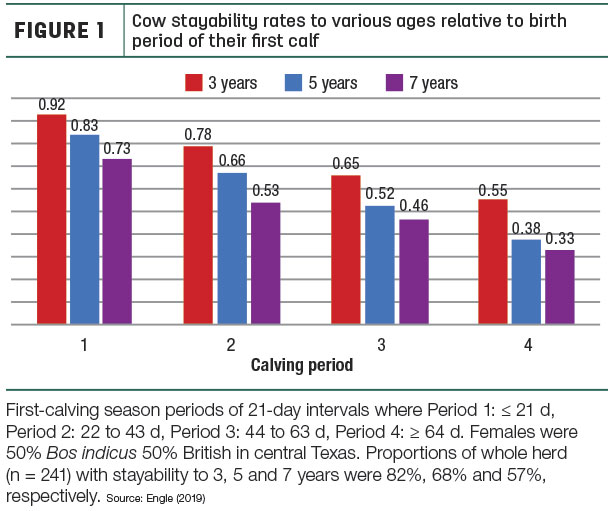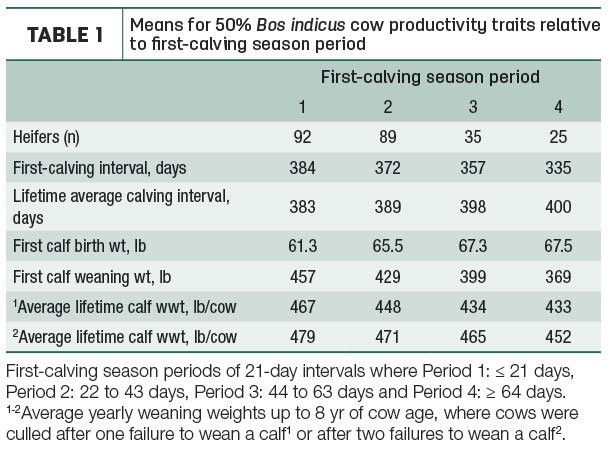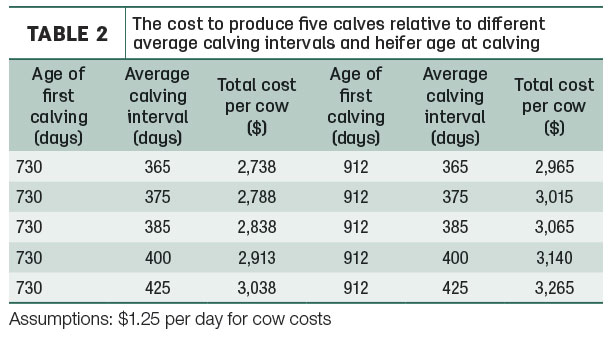Also, many producers may think that in certain production environments, types of cows or business models, cow fertility has reduced importance. Below we discuss some of the major concepts of how heifer and cow fertility affect input costs in beef herds.
The goal of an effective replacement heifer development program is not to have good heifers, but to produce good cows. Previous studies have found that Bos taurus heifers that calved earlier during their first calving season, or the first 21-day period of the season, had an increased productive lifespan and herd retention in comparison to those that first calved in later periods.
Results also show that heifer first-calving period impacts stayability to a variety of ages in Bos indicus-Bos taurus half-blood cows, where an earlier calving period shows increased potential for longevity in the herd (Figure 1).

Table 1 shows the overall productivity of these females relative to their first calving period. The reason the early calving females had lower calf birthweight was a function of spring pasture conditions improving from February through April.

Culling criteria based on first failure or second failure to wean calves both show lifetime production advantages for heifers that calved early in their first calving season.
If producers fail to track reproductive performance in their cows, they are automatically increasing the potential of higher production costs. Table 2 illustrates the cost of producing five calves from females first calving at 2 years and 2.5 years, with various lengths for calving intervals.

The most directly recognized economic advantage of increased cow herd fertility is the ability to generate income due to sale of “surplus” animals (animals not needed to maintain herd size). Table 3 shows some scenarios with various fertility and calf survival rates.

In highly productive herds, the number of potential sale animals may be 80% or more of the
breeding herd size. However, as fertility and survival rates decrease, these automatically reduce the potential of income. Under most U.S. and Canadian scenarios, somewhere around 80% calf crop weaned is the break-even level for profitable operation. The best way to keep selection pressure on cow fertility is no secret: (1) individually identify females, (2) document their annual calf production and (3) remove unproductive females from the herd. ![]()
References omitted but are available upon request. Click here to email an editor.
Bailey N. Engle is with Queensland Alliance for Agriculture and Food Innovation, Brisbane, Queensland, Australia.







